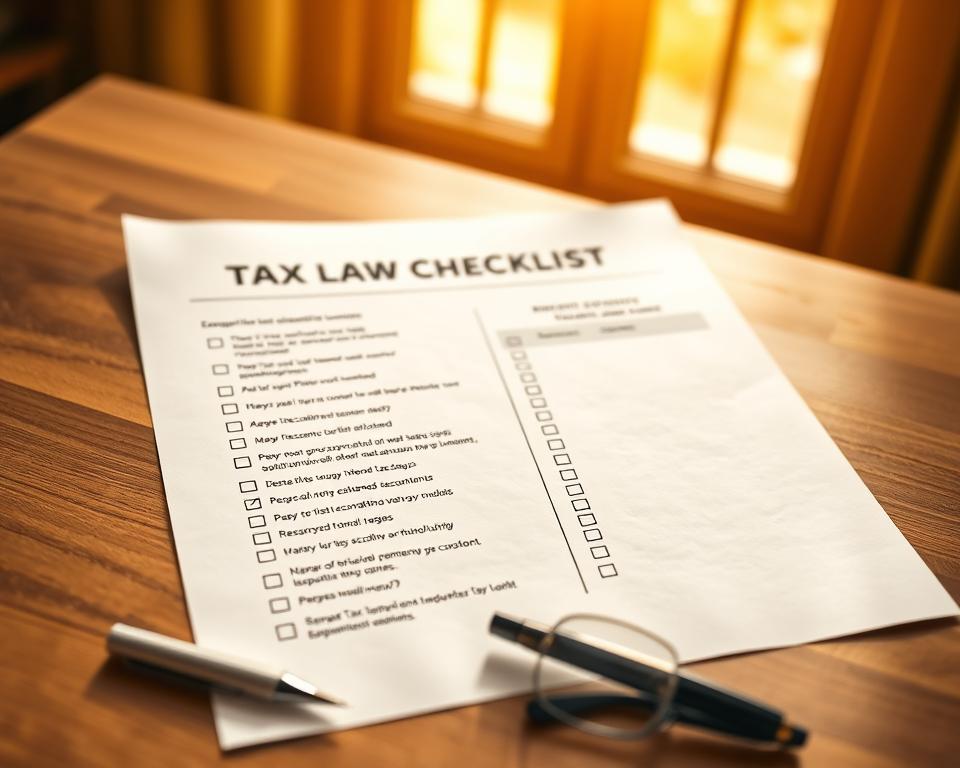Anúncios
tax law myths still trip up many people every filing season — could one misunderstanding cost you time or money this year?
Quick take: this article gives a clear, myth-busting guide so you can spot common misconceptions fast and avoid costly mistakes near April deadlines.
You’ll see why some beliefs persist, what changed for 2024 — like new 1099-K thresholds — and how the IRS actually checks returns. The audit rate is low, but mistakes, unreported income, and wrong credits draw attention more than income alone.
What to expect: concise examples tied to IRS rules, practical steps for better planning and filing, and tips to reduce penalties if you owe. Remember, extensions give extra time to file but not to pay, and late payments can trigger monthly penalties.
This is general educational guidance, not personalized advice. Use these insights to shape your approach, and consult a qualified professional for decisions about your return.
Introduction
To file tax return this year, start with clear facts instead of viral tips that sound plausible but often miss key rules.
Context: Why tax myths persist in the U.S.
Complex rules and frequent form changes create confusion. Simple online posts spread fast and an example that seems logical can lead you astray when you actually complete forms.
What changed recently and why it matters this tax year
For 2024, platforms must issue Form 1099-K at $5,000+ for goods and services, but you must report all taxable income even if you lack a form.
The IRS still uses April 15 as the standard due date, and extensions give time to file, not to pay. Penalties for late payment run 0.5% per month up to 25%.
How to use this listicle for smarter, compliant filing
This article is a practical roadmap with short examples showing when to report income, how to match amounts on returns, and when to time payments.
- Gather documents early.
- Compare to prior returns.
- Flag gig, tip, or crypto income for review.
Note: Very few taxpayers face audits (GAO found about 0.25% for TY2019), but accuracy matters. Use this content as general information and follow up with the IRS website or qualified advice for your situation.
Tax law myths: deadlines, extensions, and penalties
An extension gives breathing room to file paperwork, not to delay your balance due. For most taxpayers the payment due date stays April 15, even if you file later.
What an extension does: it extends the time to submit your return. It does not extend the time to make payments.
How penalties work: the failure-to-pay penalty is 0.5% per month of the unpaid amount, capped at 25%. Interest and penalty charges start after April 15 unless the IRS grants relief.
- Estimate what you owe and make a payment by April 15 using IRS Direct Pay or EFTPS.
- If you can’t pay in full, pay as much as possible to lower the monthly penalty and interest.
- Consider a payment plan after you pay what you can; mark payments for the correct year so credits apply to your return.
Disaster relief example: when FEMA and the IRS declare relief for a federally affected area, filing and payment dates can shift for affected ZIP codes. That means a taxpayer in a designated county may get months more to pay, while a neighbor outside the zone must still meet the normal due date.
Also remember estimated tax deadlines matter. Missing quarterly payments can create underpayment charges even if you file your return on time. Check the IRS disaster relief page or contact the IRS to confirm eligibility for any date changes.
Reporting income and 1099-K misconceptions
Before you file, know that missing a 1099-K doesn’t erase your duty to report earnings. Platforms send Form 1099-K when sales hit a $5,000 threshold for 2024, but that is a reporting rule for platforms — not a shield for your records.
Myth: No 1099-K means no need to report side income
Reality: You must report all taxable income even if no third-party form arrives. That includes app gigs, marketplace sales, tips, and crypto paid to you as money or tokens.
Case in point: cash, tips, and crypto
Examples: sales on eBay or Etsy, cash tips at a service job, and payments through Venmo or PayPal for services. Crypto you sell or receive as payment creates taxable income too. Keep dates, basis, and proceeds so you can report gains or ordinary receipts accurately.
- Recordkeeping: Save app statements, bank deposits, and expense logs.
- Non-taxable sales: Personal used-item sales at a loss usually aren’t taxable; profitable resales are.
- Withholding gaps: Gig work often has no withholding, so consider estimated payments to avoid penalties when you file return.
Action step: Reconcile deposits with your side-work records and use the right schedules when filing. If unsure, consult a professional.
Audits, errors, and IRS actions—what really triggers attention
Getting flagged often has more to do with missing forms or math errors than how much you earn. The IRS selects returns using automated checks, third-party reports, and random sampling.
Myth: Only high earners get audited or extensions trigger audits
Reality: people at many income levels can be reviewed. A GAO analysis found about a 0.25% audit rate for TY2019, so most returns are not examined.
What actually draws attention
Common triggers include mismatched income from third-party forms, math mistakes, and claiming credits you don’t qualify for. Extensions alone do not raise your audit risk.
- Omitted 1099-NEC or 1099-K amounts often prompt an automated notice — fix by amending if needed.
- Ineligible credits (for example, improper dependents or education claims) increase scrutiny.
- Large unexplained changes year over year can also trigger reviews.
Practical steps: match every form to your return, double-check math, and keep receipts and logs for income and credits. Notices are frequently corrections or document requests, not full audits; respond promptly or get professional help.
Dependents, students, and family claims—common traps
Family claims often seem simple but the rules have clear tests. Use relationship, residency, age/student status, support, and joint return checks before you claim anyone.
When students must file and when parents can claim them
If a student has job income or meets standard filing thresholds, they must file a tax return. Even a part-time campus job can create filing duties or a refund claim.
Parents may claim a full-time college student who meets the residency and support tests. Keep enrollment records and a support worksheet to prove the claim if the IRS asks.
Pets, spouses, and missing forms
Spouses are not dependents. Married couples choose Married Filing Jointly or Married Filing Separately instead of listing a spouse as a dependent.
Pets never qualify; however, verified service animal costs may count as medical expenses in limited cases.
- If a W-2 is missing, contact the employer first.
- Still missing it? Use Form 4852 with pay-stub details to file your return accurately.
- When rules are close, get professional advice to avoid mistakes.
Need more help? Read tips on avoiding common mistakes when claiming credits: avoid common mistakes.
Deductions and home office rules for employees vs. small business
Home workspace rules differ a lot depending on whether you are an employee or run a small business.

Myth: A home office deduction guarantees an audit
Debunk: claiming a legitimate home deduction does not automatically trigger extra scrutiny. You must meet the exclusive and regular use tests and show the space is your principal place of business.
Practical guidance: employee limits vs. self-employed
Since 2018, most W-2 employees cannot deduct unreimbursed job expenses on federal returns. That means a home workspace for your employer usually isn’t deductible.
If you are self-employed or run a small business, you can deduct ordinary and necessary business expenses. Examples include supplies, software, professional dues, a portion of internet and utilities, and business insurance.
- Methods: simplified square-foot method or actual expense allocation — keep records for either choice.
- Documentation: log space measurements, dates of use, receipts, and client visits if you meet customers at home.
- Payments: many sole proprietors must make estimated tax payments or quarterly payment deposits to cover income tax and self-employment obligations.
Action step: separate business and personal spending, track mileage and receipts, and confirm your approach with a professional before filing.
Conclusion
Finish strong, and use these simple steps to file tax return paperwork with less stress this year.
Confirm due dates and remember: an extension does not delay the payment deadline. Pay at least something by April 15 to cut the 0.5% per-month penalty that can reach 25%.
Report all income—even without a form (1099-K threshold is $5,000 for 2024)—and keep clear records for wages, gigs, rentals, investments, and crypto.
Most audits are rare, but accuracy protects your refund or balance. If money is tight, make a partial payment, set up a plan, and track payments so credits apply to the right year.
Next step: monitor IRS updates and consult a CPA, Enrolled Agent, or tax attorney to tailor this guidance to your situation.



